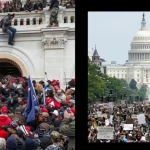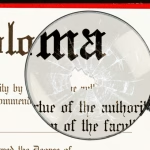In December of last year, I was traveling in northern Brazil along the Trans-Amazonian Highway, close to the city of Santarém, when the road vanished into what I believed to be fog. However, I discovered that the haze was smoke coming from the burning forest when I got out of the car. Santarém had one of the lowest air-quality index scores in the world the previous week, at 581.
In the Amazon, fire is not a natural occurrence, but lately, the frequency and size of fires have become concerning. In order to create space for cattle pastures and soy plantations, which are the main causes of deforestation in Brazil, farmers clear hundreds of thousands, if not millions, of acres in one of the largest terrestrial carbon sinks in the world each dry season. A January report claims that the production of soy has led to more deforestation in recent years.
Tensions over international trade now pose a threat to hasten the ecological devastation even more. China’s reciprocal 125 percent tariff on U.S. goods and President Donald Trump’s 145 percent tariff on Chinese imports could divert a sizable portion of China’s demand for American commodities. About 30% of China’s demand is met by soybeans, making them one of the United States’ top exports to the nation. China will most likely buy more soybeans from Brazil, the only nation that produces more than the U.S., if tariffs on U.S. soybeans are kept in place—just as it did during a trade war with Trump in 2018. Experts worry that increased demand for Brazilian soy and efforts to relax environmental regulations in states that produce the product could lead to more deforestation.
The Cerrado, a savanna biome adjacent to the Amazon that is Brazil’s second-largest source of carbon storage, is probably where some of that deforestation will occur. The Cerrado has grown to be a significant center for soybean production and is subject to far fewer environmental regulations than the Amazon. Deforestation is rife there.
Much more land is protected by law in the Amazon, and farmers are subject to more stringent regulations governing how much of their own land they can clear. Lisa Rausch, a researcher at the University of Wisconsin at Madison who focuses on Brazilian deforestation, told me, “Our published research shows that there is very little land that is suitable for soy and that can be legally cleared in the Brazilian Amazon.” However, just because it is illegal to clear land for soy doesn’t mean that it won’t happen. Brazil has strong institutions and laws to stop illegal deforestation, but enforcement is lax, particularly in the Amazon, where illegal slash-and-burning has long been practiced. According to one study, between August 2023 and July 2024, nearly 91% of all deforestation in the Amazon occurred without permission.
The demand for the cleared land that farmers typically require to grow soybeans will increase as a result of rising soybean prices. In the Amazon, soy production generally follows a set pattern: In order to create roads through the forest, loggers first cut down the most valuable trees. The remaining forest is then cleared and burned by cattle farmers, who then assert their legal or illegal claim to the land. They eventually sell the land cleared of cattle to soy farmers. The agricultural frontier continues to expand into the rainforest as the cattle farmers search for new pastures. “There is a lot more land available in the Amazon than anywhere else.” Mairon G. Bastos Lima, a senior research fellow at the Stockholm Environment Institute, informed me that there are more than 50 million hectares of open pastures, many of which are degraded.
Additionally, Brazil’s political climate is changing in ways that might permit more authorized deforestation in the Amazon. More action on illegal deforestation has been called for by President Luiz Inácio Lula da Silva. However, right-wing governors in states that produce soy in the Amazon, including Mato Grosso, have been working to weaken environmental laws since last year. This includes reclassifying a portion of the Amazon as savanna, which greatly expands the amount of land that can be legally cleared of trees. By prohibiting signatory companies from buying soy produced on Amazonian land that was cleared of trees after 2008, these same governors have enacted legislation that essentially nullifies the Soy Moratorium, a voluntary agreement that has helped to bring about a historically sharp decline in deforestation. At the federal level, a similar campaign against the Soy Moratorium is beginning to take shape. The Brazilian Supreme Court has not yet decided whether it is constitutional to undermine the Soy Moratorium and has suspended Mato Grosso’s law. In addition to strengthening Brazil’s soy-based economy, breaking the deal would provide new incentives for rainforest clearing. “I think it puts Brazil at a really precarious place because the Amazon soy moratorium is actively being weakened right now,” Rausch stated.
About a fifth of the carbon sequestered by vegetation worldwide is found in the Amazon, which spans almost 7 million square kilometers. Because of processing and transportation, soybean plantations contribute to emissions and only absorb a small portion of the carbon that tropical rainforests do. Dry spells and a postponed rainy season have also been linked to deforestation, which is detrimental to the rainforest and its inhabitants as well as to crops that rely on rainfall, like soybeans. According to data from Trase, a nonprofit that monitors global commodity supply chains, deforestation linked to soy released 133.4 million U.S. tons of CO₂ in 2022 alone, which is equal to more than 15 million American homes’ worth of electricity. Global warming could be significantly accelerated if soy farming takes even more of the Amazon’s carbon bank.
There are other factors at risk besides the climate. I went to see the Munduruku do Planalto, an Indigenous group that resides in multiple communities approximately thirty miles east of Santarém, a few days after my smoke encounter. Their villages are now oases of forest, streams, and açai groves encircled by soybean plantations, and the plateau they live on is ideal for the production of soybeans. The Munduruku now have to deal with tainted water due to agricultural runoff and intimidation from nearby soybean farmers. Manoel Munduruku, a well-known Munduruku do Planalto leader, told me, “We have lost everything, in so many ways—socially, culturally, spiritually, and economically.” One of the best defenses against deforestation in the Amazon has always been provided by indigenous groups, such as the Munduruku. However, they are also in danger: A Brazilian Supreme Court justice presented a proposal in February that would severely curtail Indigenous land rights.
It is yet unknown how precisely soybean demand will change in the new economic environment that Trump has established. With the exception of China (although he maintained a general 10% tariff on the majority of foreign goods), the U.S. president has already delayed the harsh tariffs he initially suggested, and he could change his mind at any time. Given that soybean farmers were severely impacted by tariffs during Trump’s first term and that many are still recovering, growing annoyance among American soybean farmers and industry associations, who primarily operate in red states, could prove to be politically detrimental. However, if the tariffs remain in place, the most significant consequences for Brazil—which was only taxed at 10% even under the original plan—will probably be environmental rather than geopolitical. A spike in soy exports could jeopardize the very climate goals that world leaders will be discussing at COP30, which Brazil is hosting later this year. Brazil and the rest of the world would be faced with a conundrum.













